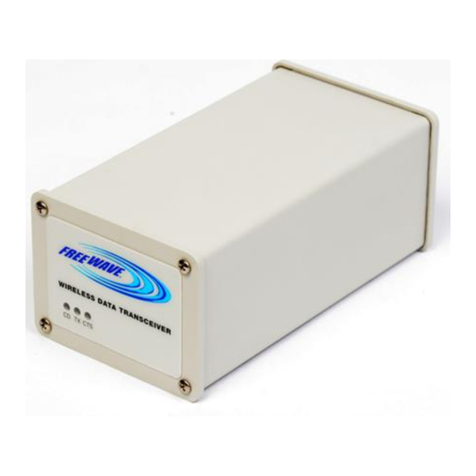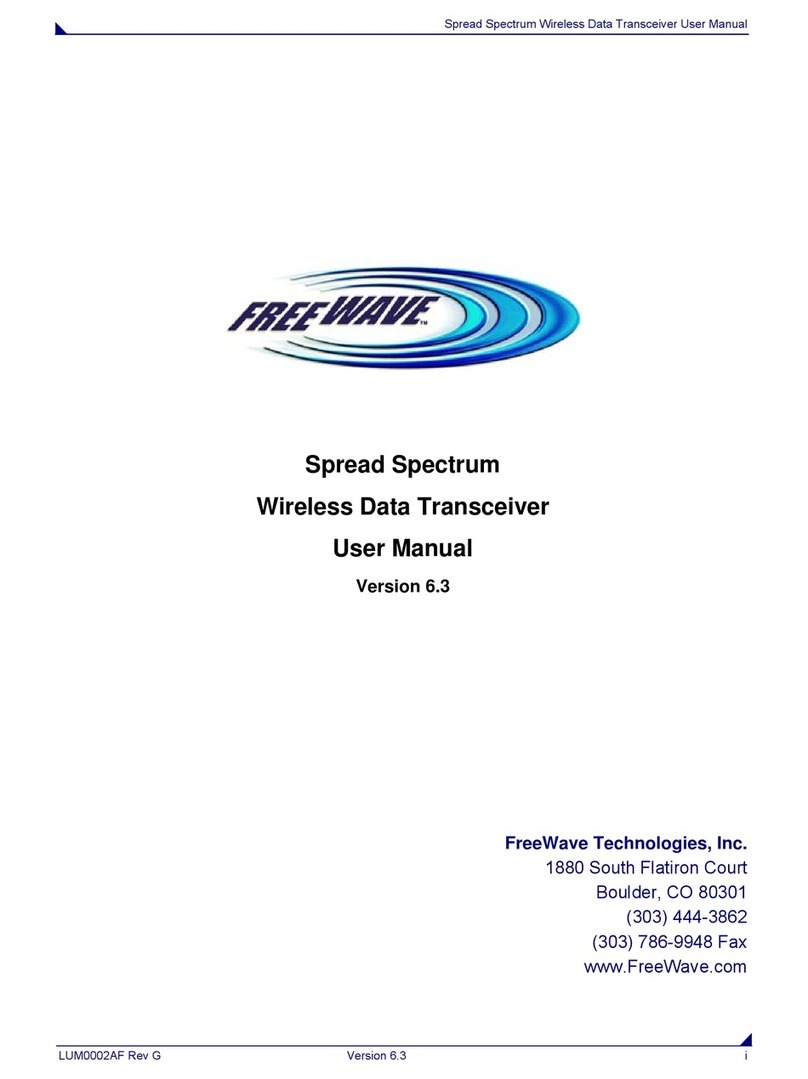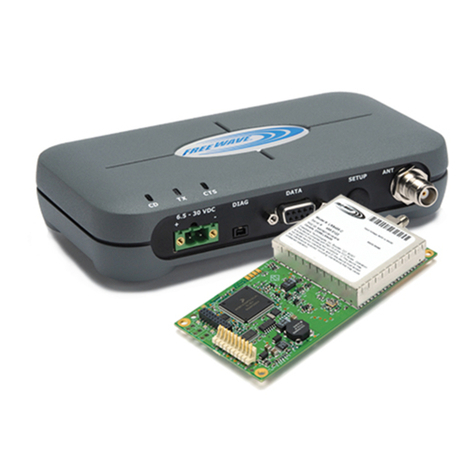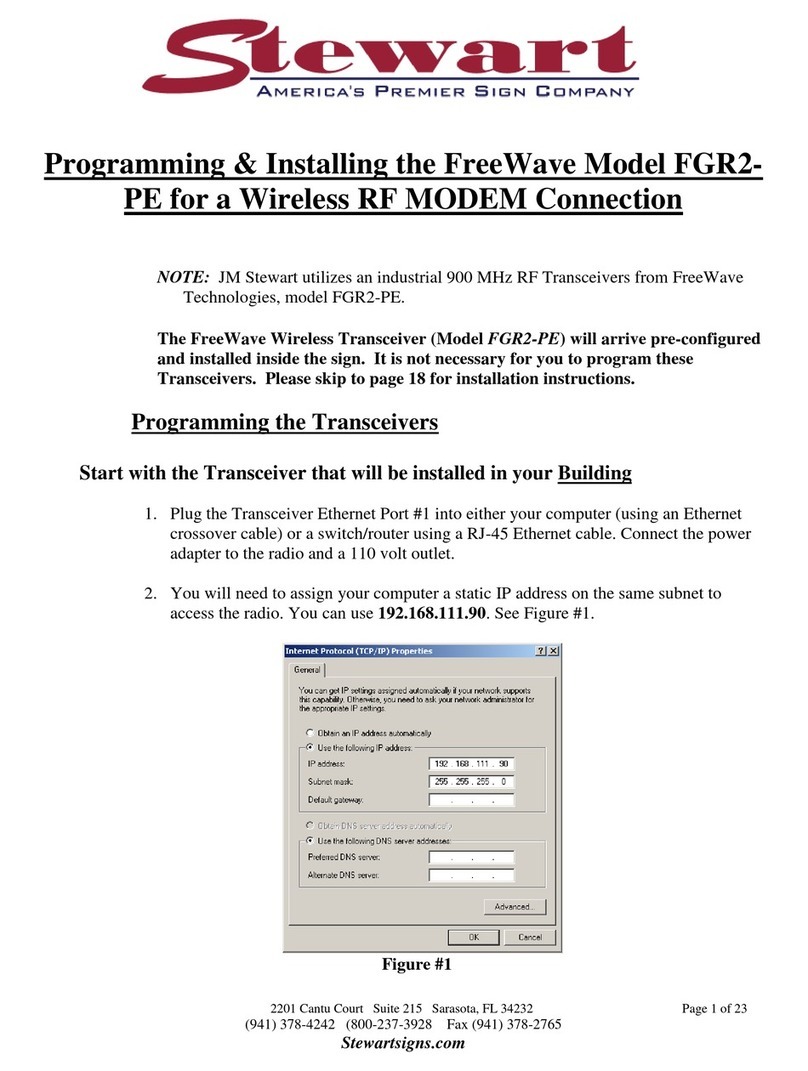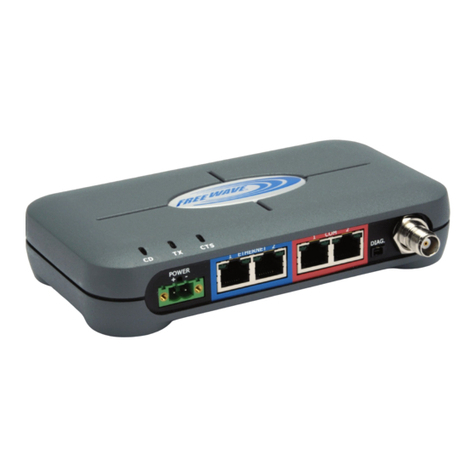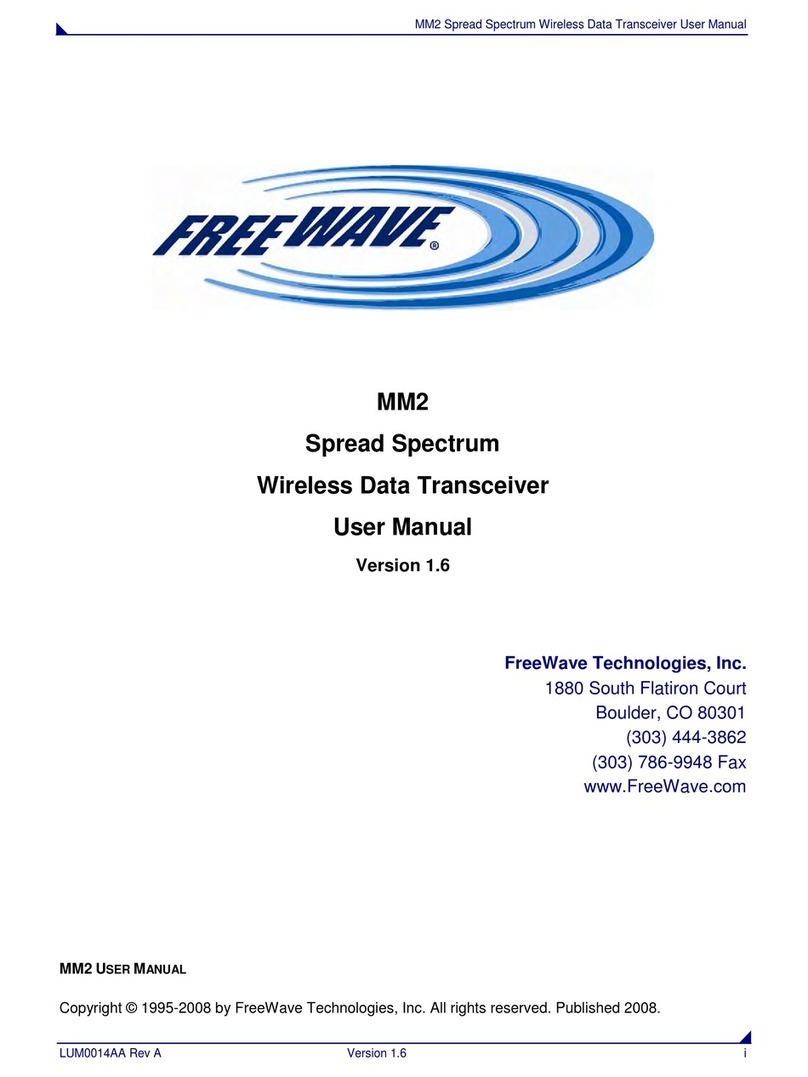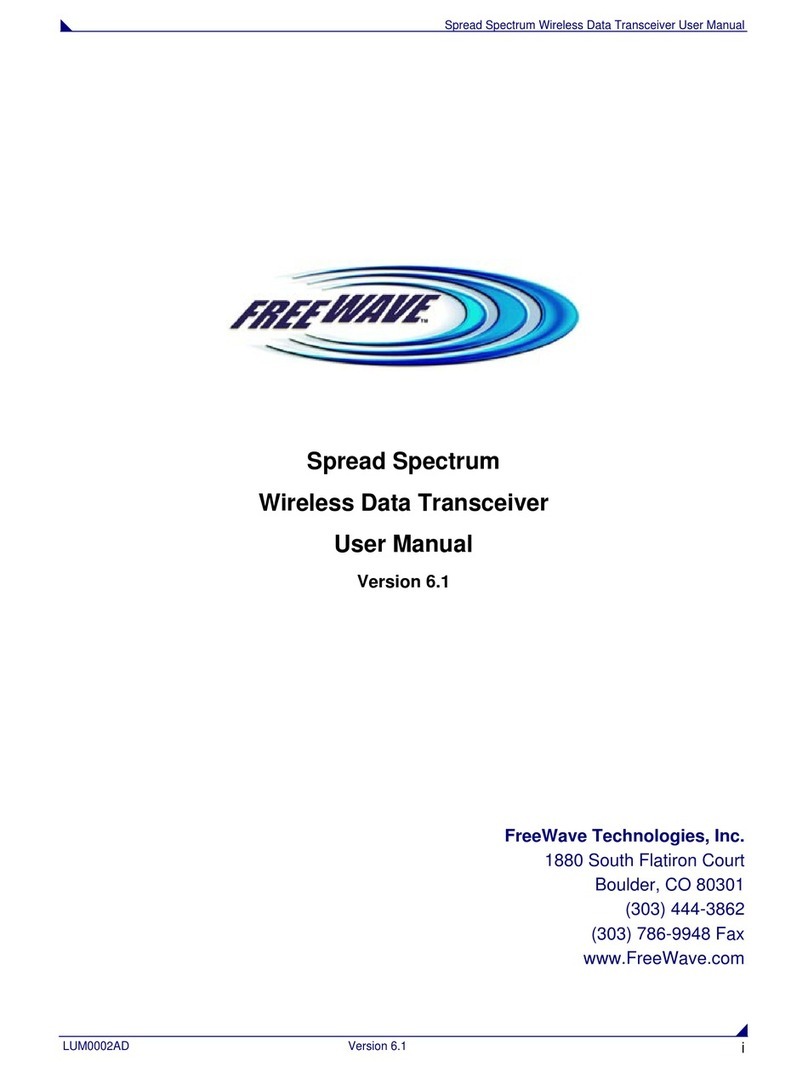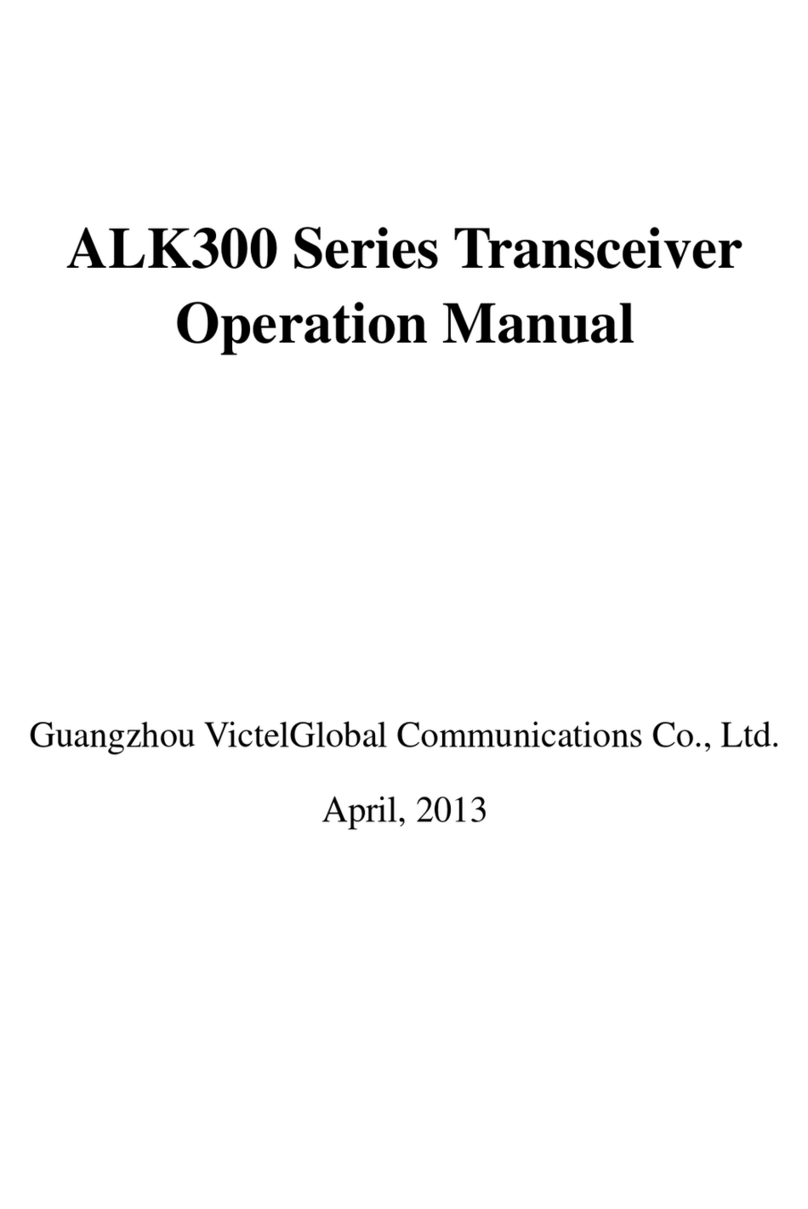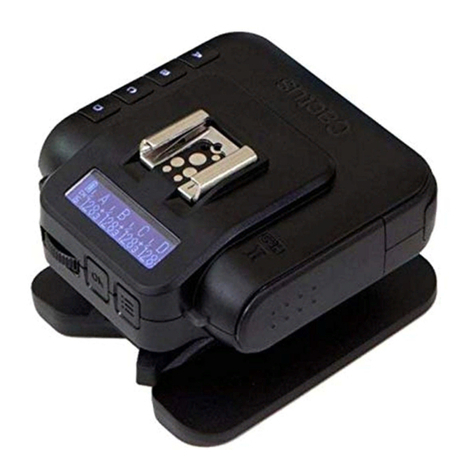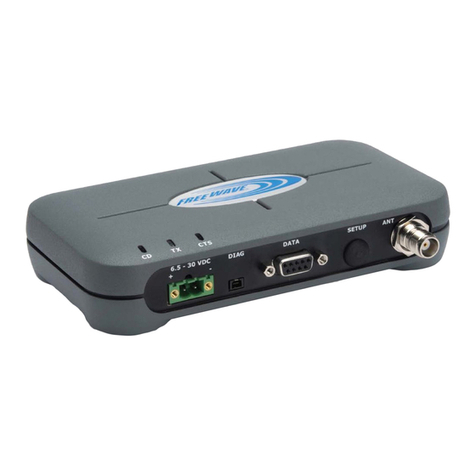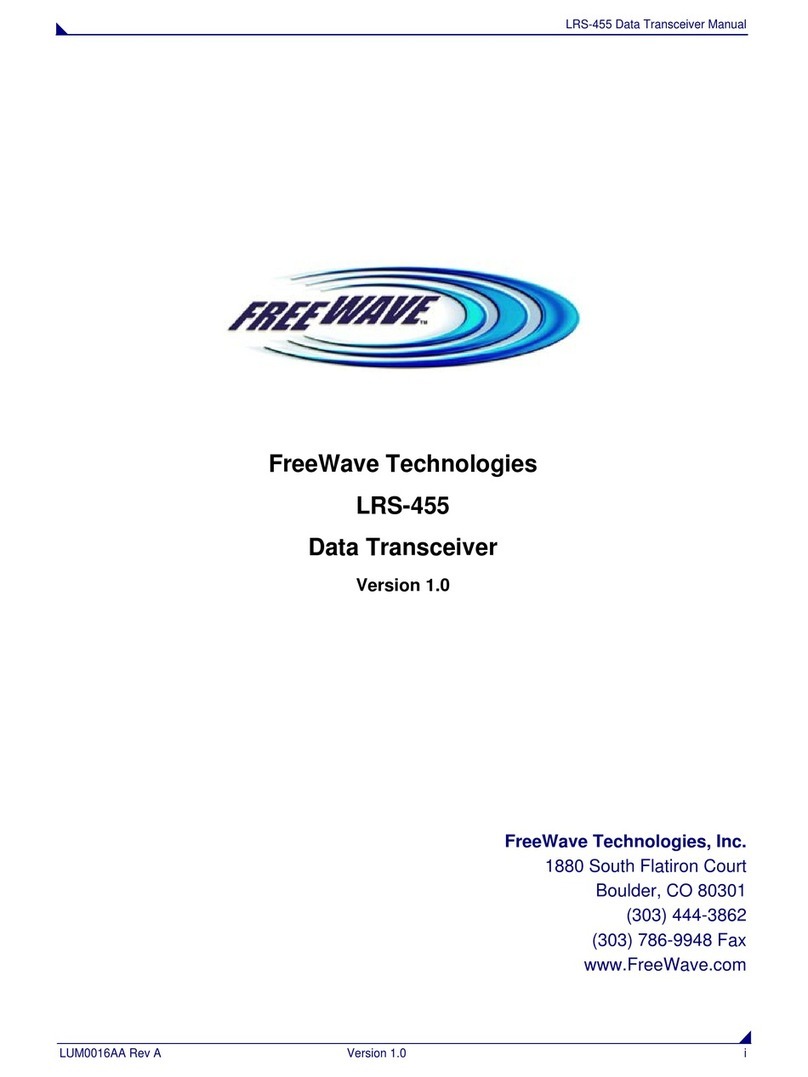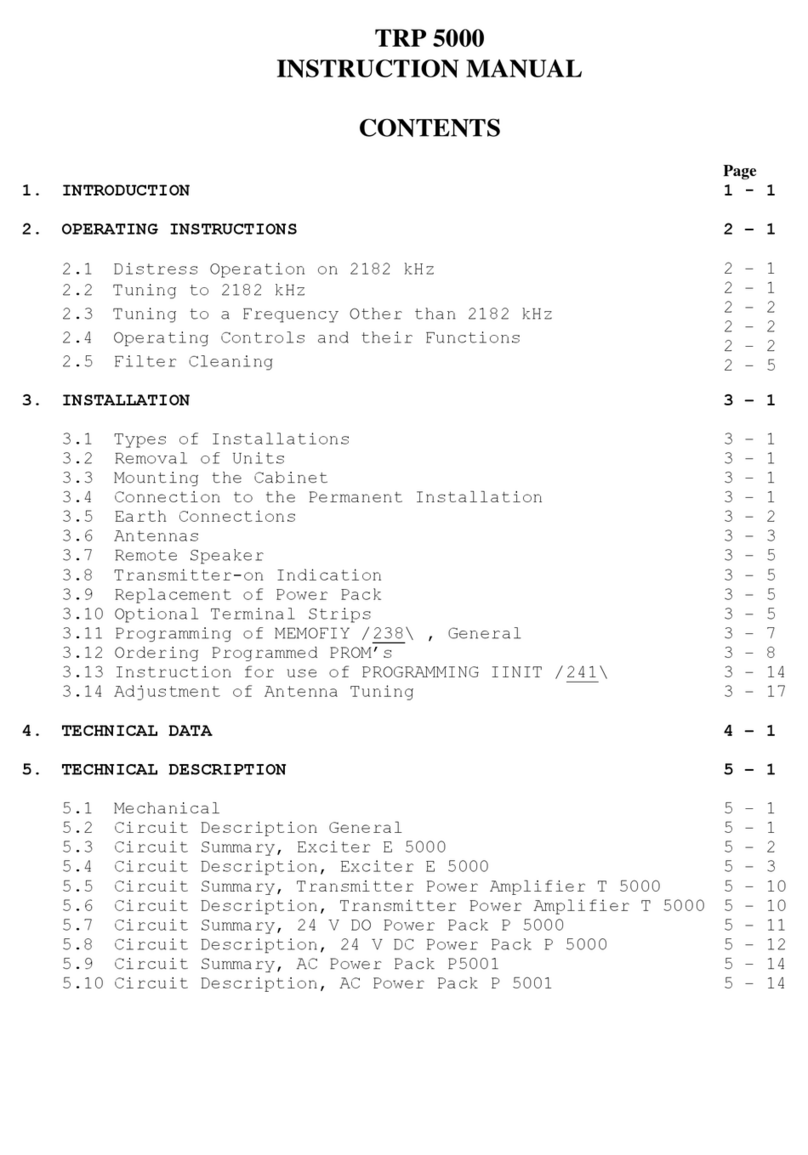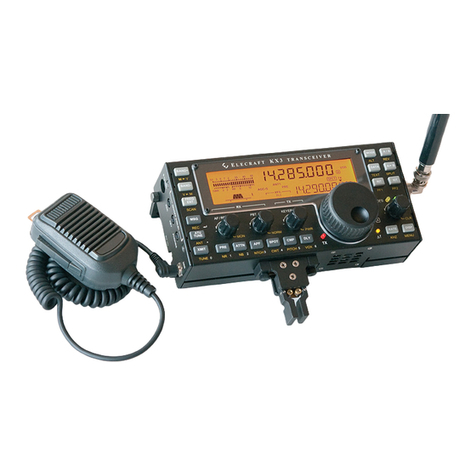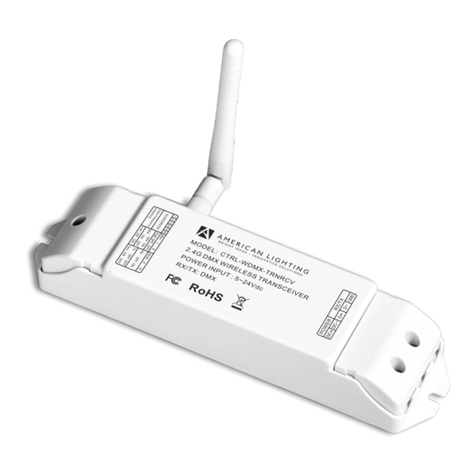
FreeWave Technologies Spread Spectrum Transceiver User Manual
900 MHz and 2.4 GHz
V4.2f
iii
FCC Notification
This device complies with part 15 of the FCC rules.
Operation is subject to the following two conditions: 1) This
device may not cause harmful interference and 2) this
device must accept any interference received, including
interference that may cause undesired operation.
This device must be operated as supplied by FreeWave
Technologies, Inc. Any changes or modifications made to
the device without the express written approval of
FreeWave Technologies may void the user's authority to
operate the device.
CAUTION: The model numbers DGR09 and DGR-115 have maximum
transmitted output power of 955mW and 1 Watt, respectively. It is
recommended that the transmit antenna be kept at least 23 cm away from
nearby persons to satisfy FCC RF exposure requirements.
Note: This equipment has been tested and found to comply with the limits
for a Class B digital device, pursuant to part 15 of the FCC Rules. These
limits are designed to provide reasonable protection against harmful
interference in a residential installation. This equipment generates, uses and
can radiate radio frequency energy and, if not installed and used in
accordance with the instructions, may cause harmful interference to radio
communications. However, there is no guarantee that interference will not
occur in a particular installation. If this equipment does cause harmful
interference to radio or television reception, which can be determined by
turning the equipment off and on, the user is encouraged to try to correct the
interference by one or more of the following measures:
♦Reorient or relocate the receiving antenna.
♦Increase the separation between the equipment and receiver.
♦Connect the equipment into an outlet on a circuit different from that to
which the receiver is connected.
♦Consult the dealer or an experienced radio/TV technician for help.
Note: Whenever any FreeWave Technologies module is placed inside an
enclosure a label must be placed on the outside of that enclosure which
includes the module's FCC ID.
